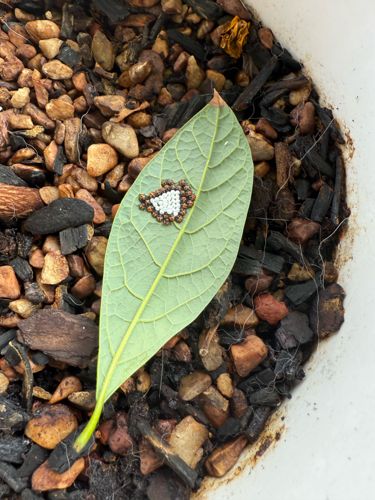Stink Bug (Eggs)
Scientific Name: Pentatomidae (eggs)
Order & Family: Order: Hemiptera, Family: Pentatomidae
Size: Individual eggs are typically very small, ranging from 1 to 2 mm in diameter. The egg mass itself can vary in size depending on the number of eggs laid, which can range from a dozen to several dozen.

Natural Habitat
Stink bug eggs are found on the leaves of plants, often in gardens, agricultural fields, orchards, and natural wooded areas where their host plants thrive. Adults and nymphs can be found on stems, leaves, and fruits of host plants.
Diet & Feeding
Stink bug nymphs and adults are herbivores, feeding on the sap of plants. Depending on the species, they can feed on a wide variety of plants, including agricultural crops, garden plants, and wild vegetation.
Behavior Patterns
Stink bug eggs are typically laid in clusters, often in geometric patterns, on the undersides of leaves. The eggs hatch into nymphs, which will undergo several instars (molting stages) before becoming adults. Once hatched, nymphs remain in the vicinity of the egg mass for a short period before dispersing. Adults and nymphs feed on plant sap.
Risks & Benefits
Stink bugs are generally considered agricultural pests due to their feeding habits, which can cause significant damage to fruits, vegetables, and field crops. This damage can include discoloration, deformities, and reduced yield. Some species can also be a nuisance when they aggregate in homes during cooler months. However, some species of stink bugs are predatory and can be beneficial by feeding on other insect pests.
Identified on: 8/8/2025